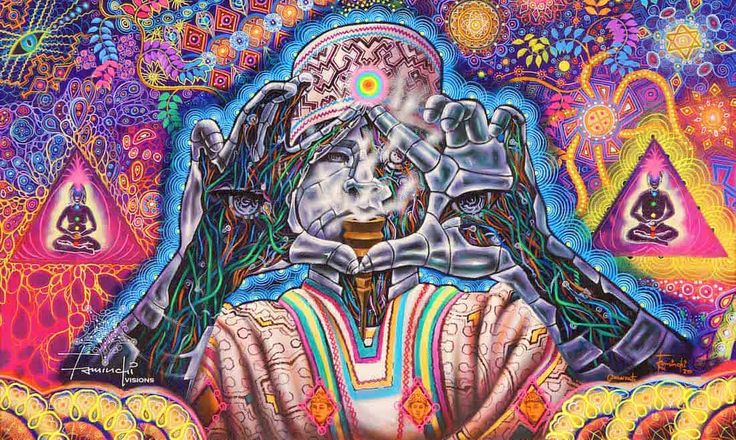
Riding the Melt: Altered States, the Necessity of Transformation
Altered states of consciousness have always been part of how we grow—not just as individuals, but as a species. They’ve shaped mythologies, sparked revolutions, healed traumas, and cracked open the boundaries of perception. Whether they come through breath, sound, meditation, psychedelics, or simply the dreaming mind doing its quiet work at night, these states give us something that ordinary awareness can’t: movement, fluidity, and access to the parts of ourselves we usually keep out of reach.
Sometimes we choose to enter these states. Sometimes they choose us. A breakup, a burnout, a moment where everything stable suddenly slips—these experiences yank us out of the familiar and drop us somewhere raw. When the mind gets too fixed in its patterns, life doesn’t force anything, but it does move. And that movement has a way of calling out what we’ve ignored. The systems we use to hold it all together—beliefs, habits, identities—start to dissolve. It can be terrifying, but also deeply alive. That’s the melt. And riding it well is a skill.
This is where altered states shine. They break up the psychic rigidity that builds over time. When you’re too stuck, they loosen things. When you’re scattered, they help reconnect the pieces. They allow us to shed layers we didn’t know we were carrying and reconnect with something more essential—something that doesn’t need words to be real.
One of the most accessible ways this happens, without any effort on our part, is dreaming. Every night, we slide into a world where the unconscious mind speaks in symbols, metaphors, and surreal mashups of memory and emotion. It’s not nonsense—it’s language. Just a different kind. The dream state is the nervous system’s own native altered state, constantly working to help us process, recalibrate, and evolve in ways our waking minds often resist.
Whether it’s a dream, a trip, or a moment of profound silence in nature, these experiences give us what the surface mind often can’t: access to the symbolic, the intuitive, the unspeakable. They reconnect us to a deeper rhythm, one that doesn’t run on productivity or perfection, but on integration.
And here’s something that matters more than most people realize: every nervous system is different. Every body has its own bandwidth. What feels like balance to one person might feel like chaos to another. There’s no one-size-fits-all baseline for being “centered.” So when we chase externally defined ideas of health, stability, or success—without checking in with our own inner reality—we usually end up frustrated. What really works is learning our own internal language, our own thresholds. That’s where real balance lives—not in some ideal state, but in an ongoing, honest relationship with our own nervous system.
Altered states help with that. They reveal the edges of what’s been repressed or forgotten. They soften the hard lines of ego, and remind us that who we are is more spacious than we think. They don’t fix us. They remind us that we’re not broken.
Zoom out, and you’ll see the same dynamic playing out culturally. Societies, like people, become rigid. Systems of thought, belief, economy, and identity get locked in—and when they stop adapting, they start breaking. Altered states, at scale, invite collective recalibration. Through art, music, ritual, even shared moments of silence or awe, they offer a way to reconnect with the parts of the human experience that get squeezed out by hyper-efficiency and chronic distraction.
In alchemical terms, it’s the classic dance: dissolve and re-form. Solve et coagula. Melt down what’s calcified, then let something more aligned take its place. This isn’t esoteric. It’s the most natural thing in the world. Nature does it. The psyche does it. And when we resist it too long, the friction shows up as suffering.
The philosopher’s stone, in this light, isn’t some mythical artifact. It’s a way of being—a quiet, resilient capacity to stay fluid through change, to let the self reconfigure without collapsing. It’s the inner stability that doesn’t come from staying the same, but from learning how to move with life, rather than against it.
This is the real work—not to escape, not to impress, but to integrate. To become more whole, not more perfect.
The more we learn to welcome the melt—to soften into transformation instead of resisting it—the more alive we feel. More awake. More connected to something real, both within and beyond.